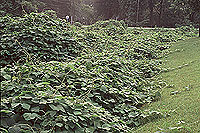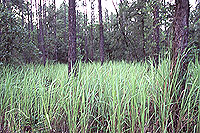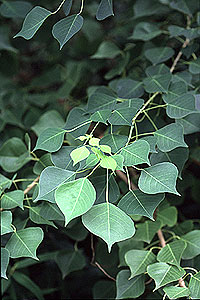|
History Animals & Plants Rare & Endangered Invasive Exotics Human Use |
Animals and Plants:
Invasive Exotics
 Kudzu may be the South's most famous invasive exotic plant. (photo by Karla Brandt) |
Non-native species are those that would not be here naturally. They occur here because of assistance from people. Some exotic species were imported by landscapers or farmers; other species got here by accident. Some non-native plants and animals become problem species. An especially common problem in Florida with exotic species is that many of them are “invasive exotics species.” Invasive exotic species can successfully invade natural communities of native species, oftentimes outcompeting and displacing many of the native species. Not all non-native species are invasive. Orange trees, for example, are an exotic species because they are not native to Florida. However, orange trees are not an invasive exotic species because they don't take over and completely destroy natural biological communities such as can happen with an invasive exotic species such as Kudzu.
 Cogon grass can invade the ground in pine forests, obliterating the many native species of plants usually found there. (photo by Karla Brandt) |
To help combat the potential detrimental impact of invasive exotics in the ARROW region, FNAI is developing a prototype map that will allow users to pinpoint on a map of the region where they have seen invasive exotic plant species. These data points will be reviewed by FNAI and, where appropriate, utilized and shared with other agencies in helping manage and control invasive exotic plant species. When available, this interactive map will be accessible through a link from this web page.
For more information about exotics in general and what you can do to help prevent the spread of non-native species, go to the
following web sites:
Florida Exotic Pest Plant Council
Among its many offerings is “Invasives 101”
www.fleppc.org/
 Chinese tallow tree is also called popcorn tree because of its white fruits. It's pretty, but it's deadly to native plant species, particularly in river swamps and lake shores, where it crowds out native vegetation. (photo by Karla Brandt) |
A sample of non-native invasive species reported in the ARROW region:
Note: The content of the website has not been updated since 2005. The site remains online for it's value as legacy content and is unlikely to be updated.